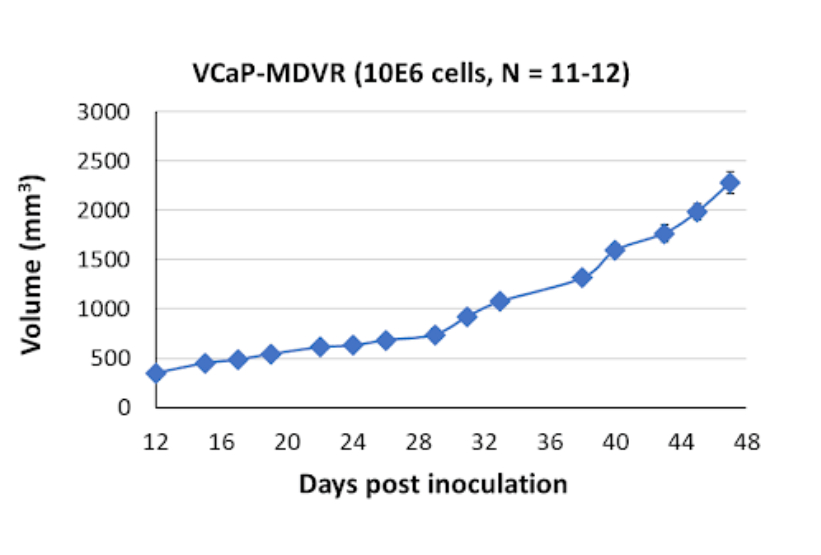About VCaP-MDVR
Ideal for: Anti-androgen drug resistance studies, castration resistant studies
Most late-stage prostate cancer patients receiving next-generation anti-androgens initially respond to treatment, but this is usually followed by inevitable disease progression. Therefore, discovery of drugs that overcome adaptive resistance mechanisms is paramount. VCaP is a desirable prostate cancer cell line for in vivo studies as it models human prostate carcinoma very closely. An anti-androgen drug resistant prostate cancer model was generated based on the VCaP cell line and is ideal for next generation discovery programs. In the OncoRat this model not only shows a great engraftment rate of nearly 100% but also clear regression and re-growth after castration as demonstrated in the figure.
VCaP-MDVR Tumor Kinetics in the SRG™ Rat

VCaP-MDVR tumor growth in Hera’s SRG Rat.
Products & Services
Xenograft Efficacy Studies
Includes collection of blood, tissues & tumor for ADME, PK/PD and analysis.
(Bi)weekly Tumor Sampling
Via fine needle aspiration (FNA). For longitudinal evaluation of drug exposure, histology and gene expression.
OncoRats
Cutting edge models optimized for engraftment.
Get help with your research by scheduling a call with Hera.
References
- 10.1039/c5mb00101c
- https://doi.org/10.1155/1998/298530
- https://doi.org/10.1371/journal.pone.0078398
- Rubin, I., and Yosef Yarden. “The basic biology of HER2.” Annals of oncology 12 (2001): S3-S8.
References MLA
- Ersahin, Tulin, et al. “The PI3K/AKT/Mtor Interactive Pathway.” Molecular BioSystems, 20 Apr. 2015, pubs.rsc.org/en/content/articlelanding/2015/MB/C5MB00101C.
- Fong, Jason T., et al. “Alternative Signaling Pathways as Potential Therapeutic Targets for Overcoming EGFR and C-MET Inhibitor Resistance in Non-Small Cell Lung Cancer.” PLOS ONE, 4 Nov. 2013, journals.plos.org/plosone/article?id=10.1371%2Fjournal.pone.0078398.
- Paterson, James W.E. “Brcal: A Review of Structure and Putative Functions.” Hindawi , 1998, www.hindawi.com/journals/dm/1998/298530/.
- Yarden, Rubin. “The Basic Biology of HER2.” Annals of Oncology : Official Journal of the European Society for Medical Oncology, 2001, pubmed.ncbi.nlm.nih.gov/11521719/.

